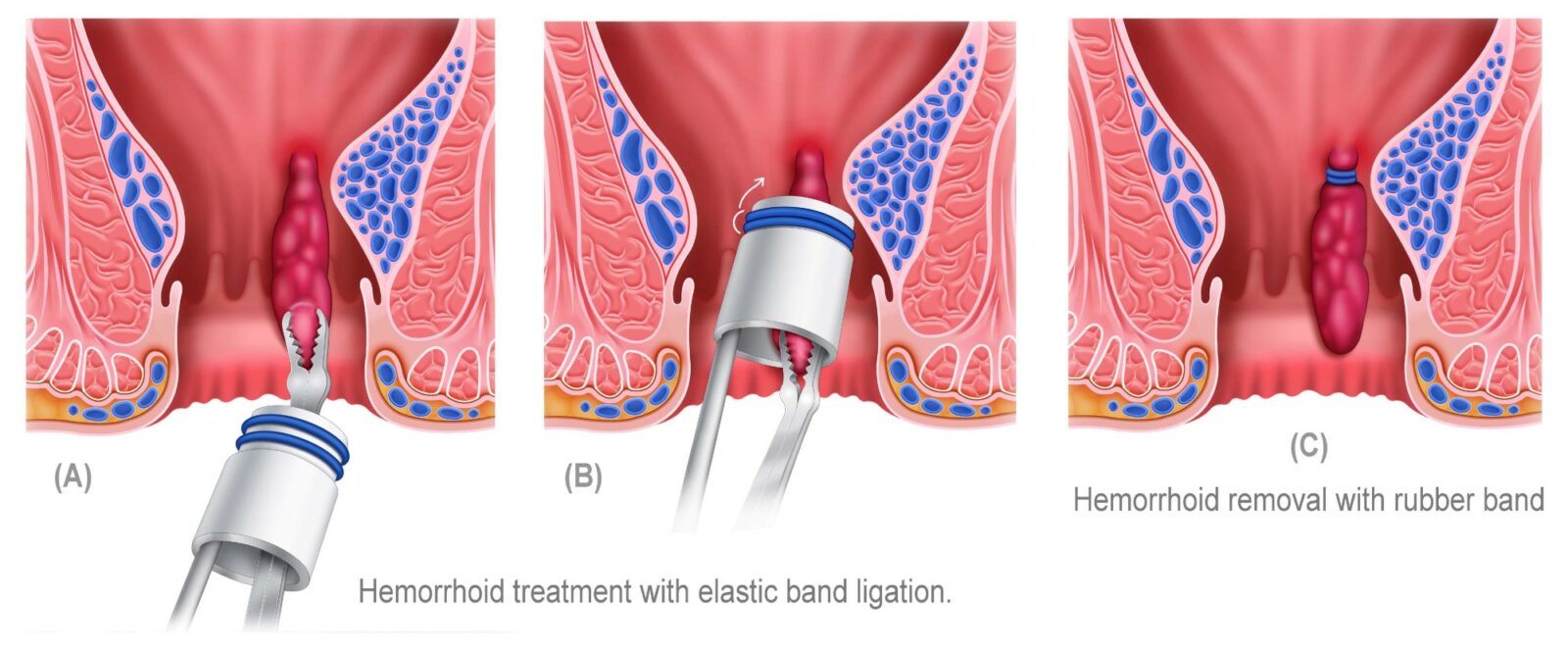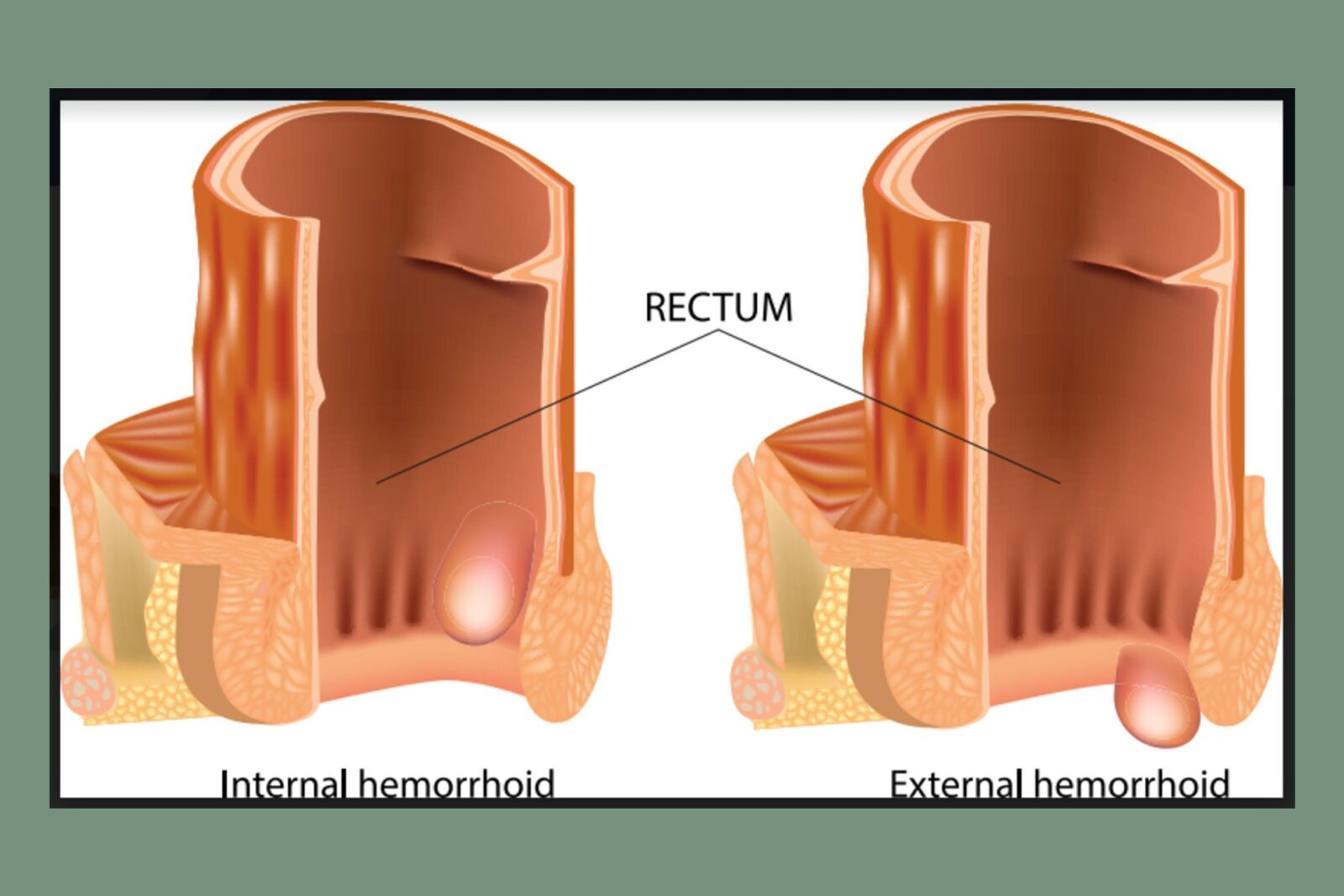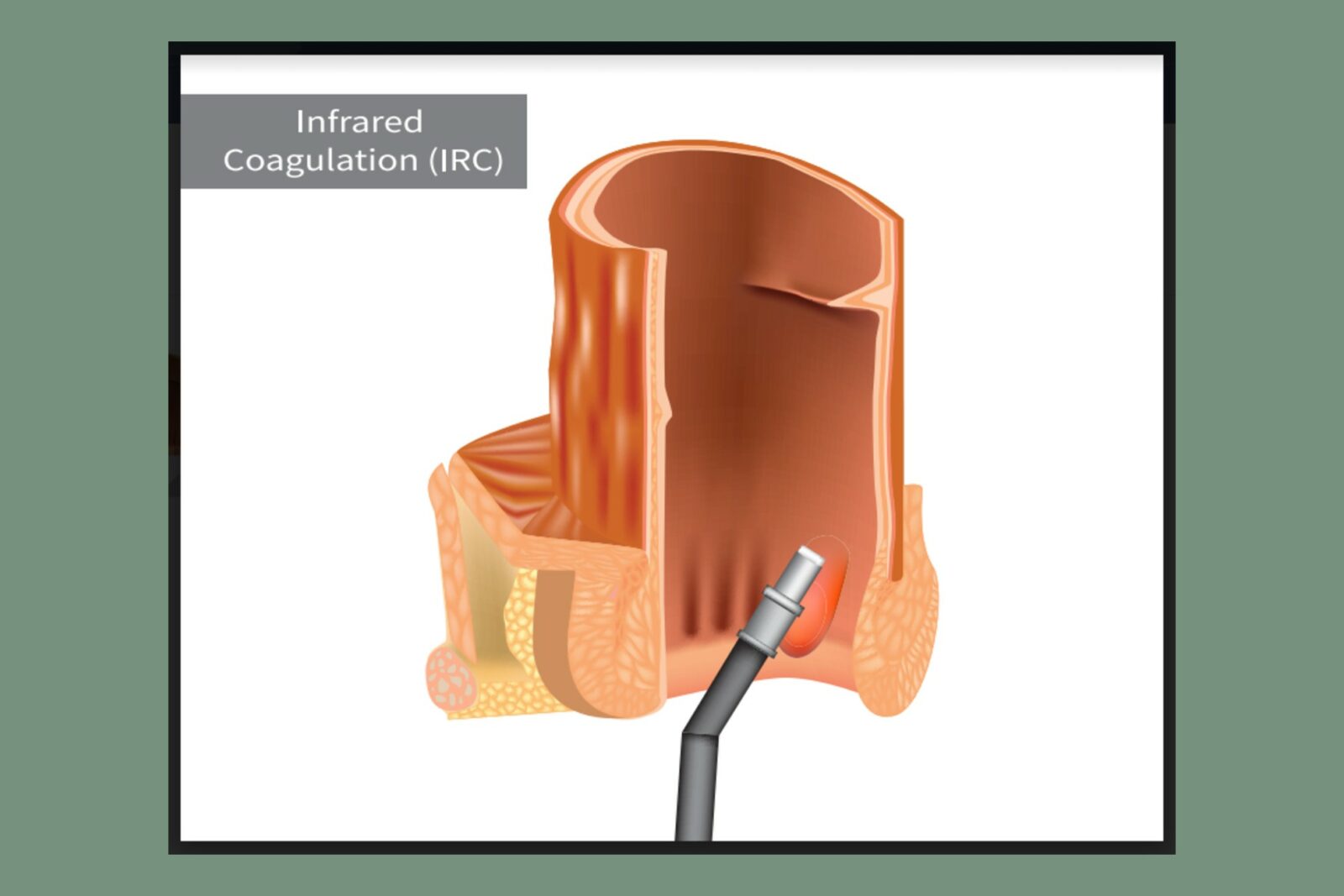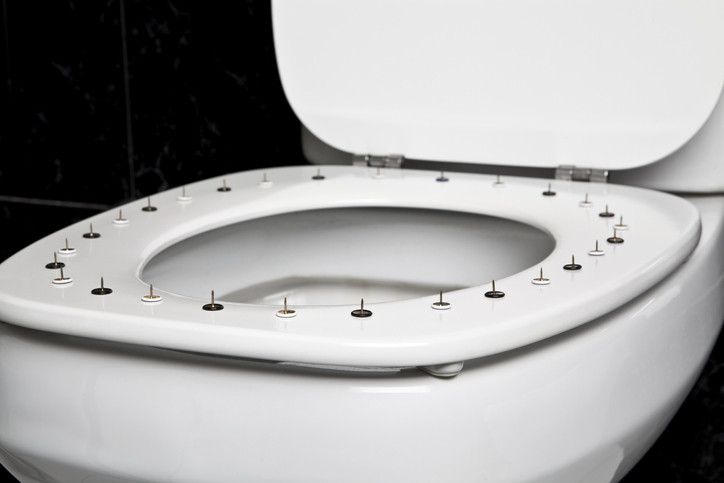Hemorrhoids are distended blood vessels that form either around the anus (called external hemorrhoids) or in the rectum (called internal hemorrhoids).
Hemorrhoids are usually caused by increased pressure due to overweight, or chronic constipation with straining during bowel movements. By age 50, about half the population has experienced one or more of the classic symptoms, which include rectal pain, itching and bleeding during the bowel movements. Although hemorrhoids are rarely dangerous, they can be recurrent and painful.

Hemorrhoids are pillow-like clusters of veins that lie just under the mucous membrane lining of the rectum and anus. The condition most of us call hemorrhoids develops when those veins become swollen and distended, like varicose veins in the legs. External hemorrhoids can be extremely uncomfortable as the overlying skin can become irritated and eroded. If a blood clot forms inside an external hemorrhoid, the pain can be sudden and very severe. It might feel like a firm lump around the anus. Once the blood clot dissolves, the external hemorrhoids turn into a skin tag. Skin tags around the anus may get very itchy and uncomfortable. Internal hemorrhoids are typically painless, but as they grow in size, they can easily bleed during bowel movements. It is common for patients to complain of bright red blood on the toilet paper or dripping into the toilet bowl after defecation. Internal hemorrhoids may also prolapse, or extend beyond the anus, causing several potential problems. When a hemorrhoid protrudes, it can collect small amounts of mucus and tiny stool particles that may cause an irritation called pruritus ani. Pruritus Ani is a medical term for excessive itching in the anal area. Wiping constantly to try to relieve the itching can worsen the problem. Patients with chronic constipation are typically prone to have hemorrhoids. Straining during bowel movements and prolonged sitting on the toilet interfere increase the blood flow to the hemorrhoids and make them enlarge. As hemorrhoids get larger, they tend to bleed and prolapse.

Hemorrhoids can usually be diagnosed from a simple medical history and physical exam. External hemorrhoids are generally visible around the anus. An examination of the anal canal with an anoscope, a short plastic tube inserted into the rectum with a light source is generally used to visualize internal hemorrhoids.
A number of small outpatient procedures are available to treat hemorrhoids.

The most common hemorrhoid treatment in the United States is rubber band ligation. A small elastic band is placed around the base of a hemorrhoid in doctor’s office. The band prevents hemorrhoids to get filled with blood and causes them to shrink completely. Other office procedures include laser or infrared coagulation, sclerosing therapy and cryosurgery. Persistently symptomatic external hemorrhoids or recurrent internal hemorrhoids despite rubber band ligation treatments might require a surgical removal either through an incision, a procedure called a hemorrhoidectomy; or using a surgical stapling device, a procedure called stapled hemorrhoidopexy. Typically, these procedures are done under general anesthesia.
The best way to prevent hemorrhoids is to prevent constipation. Therefore, typical recommendations are high fiber diet, good hydration, exercising, avoiding prolonged sitting on the toilet, and use of daily fiber supplements.
Frequently Asked Questions:
Do I have a hemorrhoid?
You may have a hemorrhoid if you are experiencing the classic symptoms such as rectal pain, itching, and bleeding during bowel movements. External hemorrhoids can also cause pain and discomfort around the anus due to the formation of a blood clot inside the hemorrhoid, as well as due to irritation of the overlying skin. Internal hemorrhoids are not usually painful, but they tend to cause blood to drip in the toilet bowl after defecation. As hemorrhoids get larger, these symptoms may become more severe. To determine if you have a hemorrhoid, schedule a consultation with Dr. Bortecen of SoHo Men’s Health today.
How are hemorrhoids diagnosed at SoHo Men’s Health?
At SoHo Men’s Health, hemorrhoids can usually be diagnosed through a discussion of your medical history and a physical exam. External hemorrhoids are visible around the anus, while internal hemorrhoids may require the use of an anoscope to examine the anal canal.
How are hemorrhoids treated at SoHo Men’s Health?
At SoHo Men’s Health, Dr. Bortecen provides a number of minor outpatient procedures to treat hemorrhoids. One of the most common treatments for hemorrhoids is rubber band ligation. This procedure is executed by placing a small band around the base of the hemorrhoid in order to cut off their blood supply and cause them to shrink completely. Other office procedures for treating hemorrhoids can include: laser or infrared coagulation, sclerosing therapy, and cryosurgery. In some cases, persistent or recurring hemorrhoids may also be surgically removed using a hemorrhoidectomy.

